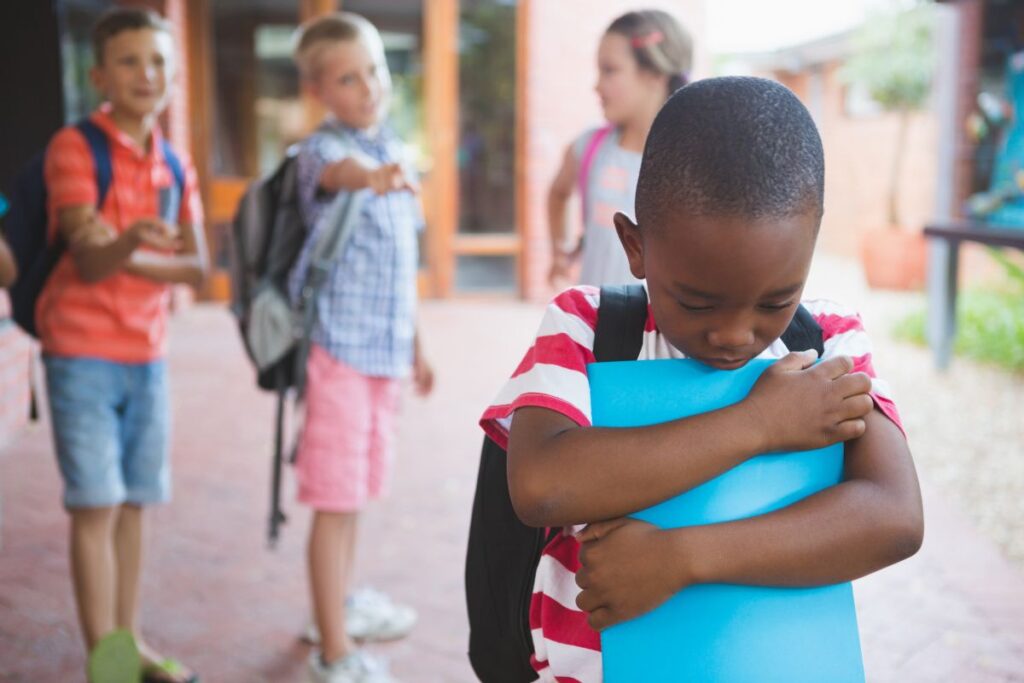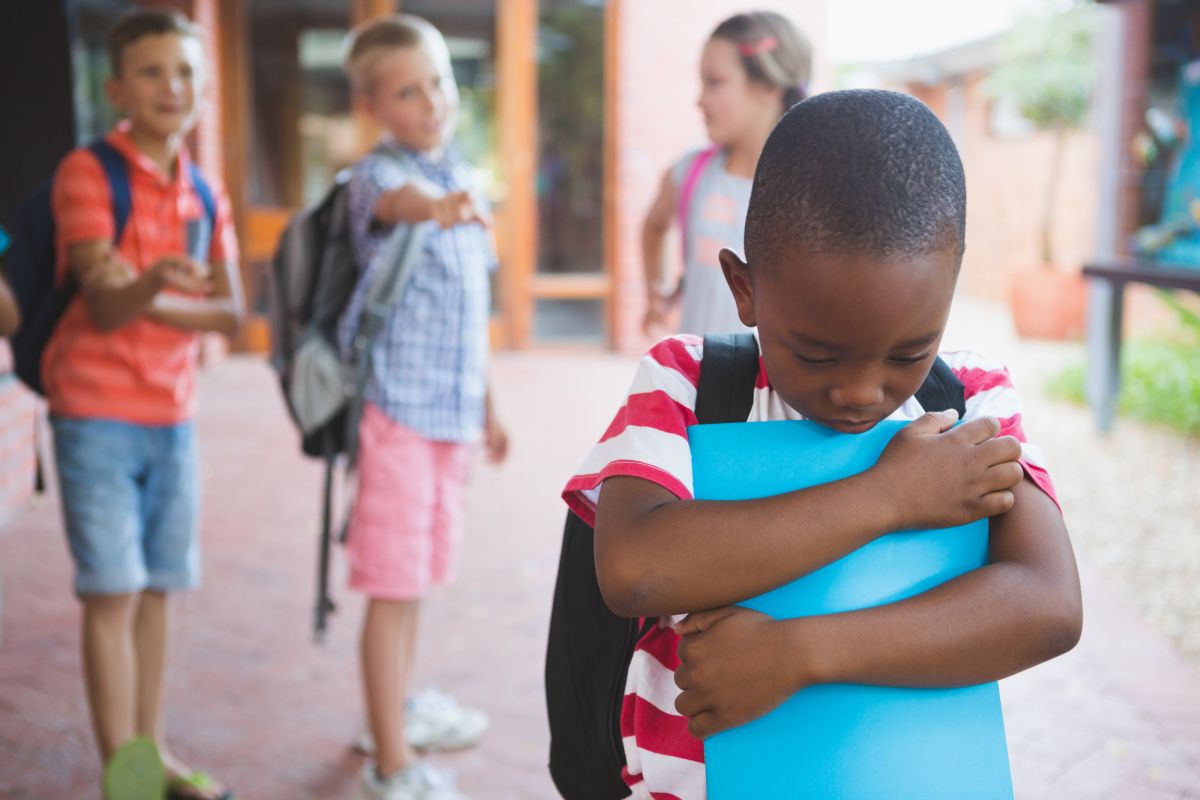
The Unseen Scars: Understanding and Addressing Someone Being Bullied
Bullying, a pervasive issue affecting individuals of all ages and backgrounds, leaves deep and lasting scars. Whether it manifests as physical violence, verbal abuse, social exclusion, or cyber harassment, the impact on someone being bullied can be devastating. This article aims to shed light on the multifaceted nature of bullying, its profound consequences, and the critical steps we can take to support those who are targeted.
Defining Bullying: A Closer Look
Bullying is generally defined as unwanted, aggressive behavior that involves a real or perceived power imbalance. This behavior is often repetitive and can take various forms:
- Physical Bullying: Involves physical harm, such as hitting, kicking, pushing, or damaging property.
- Verbal Bullying: Includes name-calling, insults, threats, and taunting.
- Social Bullying: Aims to damage someone’s reputation or social relationships through exclusion, spreading rumors, or public humiliation.
- Cyberbullying: Uses electronic communication, such as social media, text messages, or emails, to harass, threaten, or embarrass someone.
Understanding these different forms is crucial in recognizing and addressing instances of bullying effectively. Recognizing the signs that someone is being bullied is the first crucial step.
The Devastating Impact of Bullying
The effects of bullying extend far beyond the immediate incident. For someone being bullied, the consequences can be profound and long-lasting, affecting their mental, emotional, and physical well-being.
Mental Health Consequences
One of the most significant impacts of bullying is on mental health. Victims are at a higher risk of developing:
- Anxiety: Constant fear and worry about future bullying incidents.
- Depression: Feelings of sadness, hopelessness, and loss of interest in activities.
- Low Self-Esteem: A diminished sense of self-worth and confidence.
- Post-Traumatic Stress Disorder (PTSD): Flashbacks, nightmares, and severe anxiety related to bullying experiences.
- Suicidal Thoughts: In severe cases, bullying can lead to thoughts of self-harm and suicide.
These mental health challenges can significantly impair a person’s ability to function in daily life, affecting their academic performance, social relationships, and overall quality of life. The emotional toll on someone being bullied can be immense.
Emotional Distress
Beyond diagnosable mental health conditions, bullying can cause a range of emotional distress:
- Feelings of Shame and Humiliation: Victims may feel embarrassed and ashamed of being targeted.
- Anger and Resentment: A sense of injustice and frustration towards the bully and the situation.
- Isolation and Loneliness: Feeling disconnected from others and unable to trust those around them.
- Fear and Insecurity: Constant anxiety about safety and potential future attacks.
These emotions can make it difficult for someone being bullied to form healthy relationships, participate in social activities, and feel safe in their environment.
Physical Health Problems
The stress and anxiety associated with bullying can also manifest in physical symptoms:
- Sleep Disturbances: Difficulty falling asleep or staying asleep.
- Headaches and Stomachaches: Physical symptoms triggered by stress.
- Weakened Immune System: Increased susceptibility to illness due to chronic stress.
- Changes in Appetite: Eating too much or too little as a result of emotional distress.
These physical health problems can further exacerbate the emotional and mental health challenges faced by someone being bullied. [See also: The Long-Term Effects of Childhood Trauma]
Recognizing the Signs: Is Someone Being Bullied?
Identifying whether someone is being bullied can be challenging, as victims often try to hide their experiences out of shame, fear, or a desire to handle the situation on their own. However, there are several warning signs to look out for:
- Unexplained injuries: Bruises, cuts, or other injuries without a clear explanation.
- Lost or damaged belongings: Missing or broken items, such as clothing, electronics, or school supplies.
- Changes in eating or sleeping habits: Sudden loss of appetite, overeating, nightmares, or insomnia.
- Decline in academic performance: A drop in grades, loss of interest in school, or frequent absences.
- Social withdrawal: Avoiding social situations, spending more time alone, or losing friends.
- Feelings of helplessness or hopelessness: Expressing negative feelings about themselves or their future.
- Reluctance to go to school or participate in activities: Making excuses to avoid situations where bullying might occur.
If you notice any of these signs, it’s essential to reach out and offer support. Open communication is key to uncovering the truth and helping someone being bullied.
Taking Action: How to Help Someone Being Bullied
If you suspect that someone is being bullied, there are several steps you can take to provide support and help them navigate the situation:
Listen and Validate
The most important thing you can do is listen to their story without judgment. Let them know that you believe them and that you understand how difficult their experience is. Validate their feelings and reassure them that they are not alone. Acknowledge the pain someone being bullied is experiencing.
Offer Support and Reassurance
Remind them that they are not to blame for the bullying. Emphasize their strengths and qualities to boost their self-esteem. Let them know that you care about them and that you will be there to support them through this difficult time. It’s crucial for someone being bullied to know they are not alone.
Encourage Reporting
Encourage them to report the bullying to a trusted adult, such as a parent, teacher, counselor, or school administrator. Explain that reporting is not tattling but rather a way to protect themselves and others from further harm. Help them gather evidence, such as screenshots of online messages or notes about specific incidents. Reporting incidents is a critical step in stopping someone being bullied.
Develop a Safety Plan
Work with them to create a safety plan that outlines strategies for avoiding bullying situations and staying safe. This might include:
- Avoiding places where bullying is likely to occur.
- Staying with friends or trusted adults.
- Developing assertive communication skills to respond to bullies.
- Knowing how to report bullying incidents quickly and effectively.
A safety plan can empower someone being bullied to take control of their situation and protect themselves from further harm. Having a plan in place can offer peace of mind to someone being bullied.
Seek Professional Help
If the bullying is severe or causing significant emotional distress, encourage them to seek professional help from a therapist or counselor. A mental health professional can provide support, teach coping skills, and help them process their experiences. Cognitive Behavioral Therapy (CBT) and other therapeutic approaches can be particularly helpful in addressing the anxiety, depression, and low self-esteem associated with bullying. Professional intervention can be transformative for someone being bullied. [See also: Finding the Right Therapist for You]
Preventing Bullying: Creating a Culture of Respect
While supporting those who are targeted is essential, it’s equally important to address the root causes of bullying and create a culture of respect and empathy. This requires a multi-faceted approach involving schools, families, and communities.
School-Based Interventions
Schools play a crucial role in preventing bullying by implementing comprehensive anti-bullying programs. These programs should include:
- Clear policies and procedures for reporting and addressing bullying incidents.
- Training for teachers and staff on how to recognize and respond to bullying.
- Educational programs for students on the impact of bullying and the importance of respect and empathy.
- Creating a positive school climate that promotes inclusivity and acceptance.
By creating a safe and supportive environment, schools can help prevent bullying from occurring in the first place. A proactive approach is vital in preventing someone being bullied.
Parental Involvement
Parents also have a critical role to play in preventing bullying. They can:
- Talk to their children about bullying and its impact.
- Teach their children empathy and respect for others.
- Monitor their children’s online activity and address any instances of cyberbullying.
- Communicate with the school about any concerns regarding bullying.
- Model positive behavior and healthy relationships.
By working together with schools and communities, parents can help create a culture where bullying is not tolerated. Open communication is essential in preventing someone being bullied.
Community Initiatives
Community organizations can also contribute to bullying prevention by:
- Providing resources and support for victims of bullying.
- Offering educational programs for youth on conflict resolution and social skills.
- Promoting awareness of bullying through public campaigns.
- Creating safe spaces for young people to connect and build positive relationships.
By working together, communities can create a network of support that helps prevent bullying and promotes the well-being of all young people.
Conclusion: Standing Up Against Bullying
Bullying is a serious issue that has devastating consequences for individuals and communities. By understanding the different forms of bullying, recognizing the signs that someone is being bullied, and taking action to provide support and prevent future incidents, we can create a world where everyone feels safe, respected, and valued. If you know someone being bullied, reach out, offer your support, and help them find the resources they need to heal and thrive. Together, we can stand up against bullying and create a brighter future for all.

